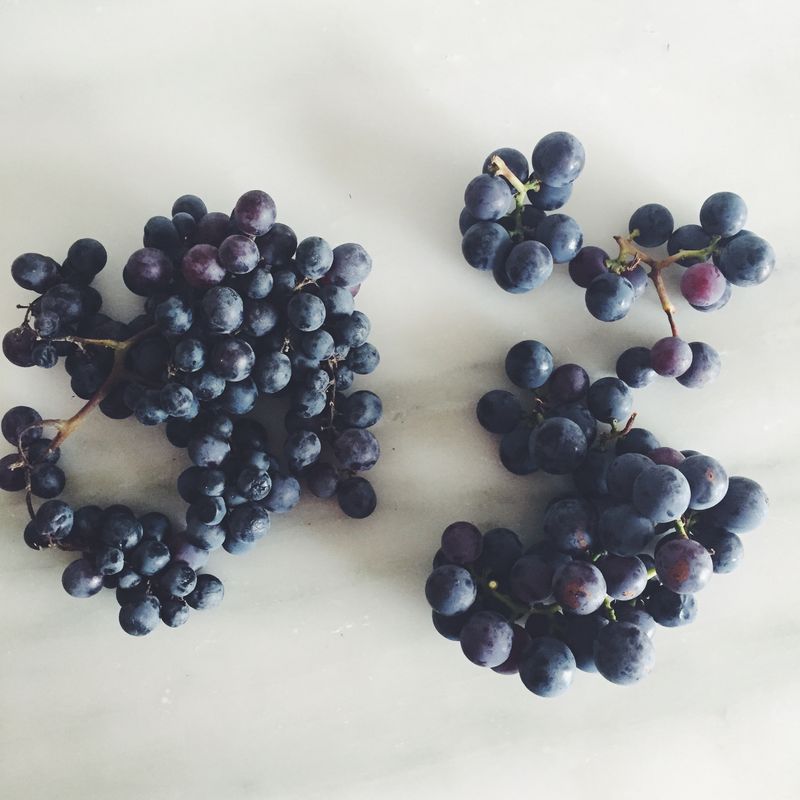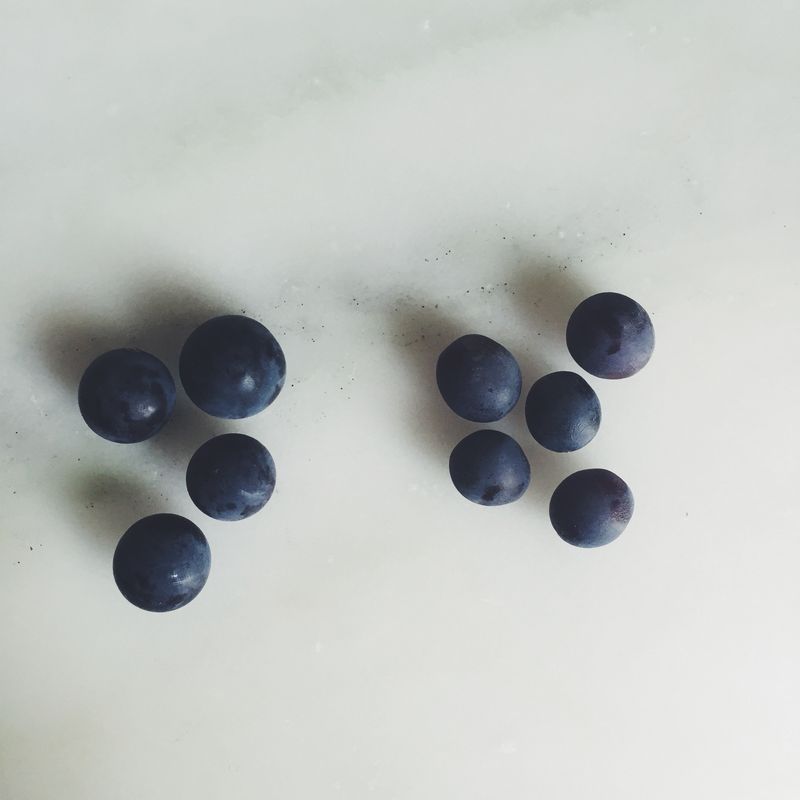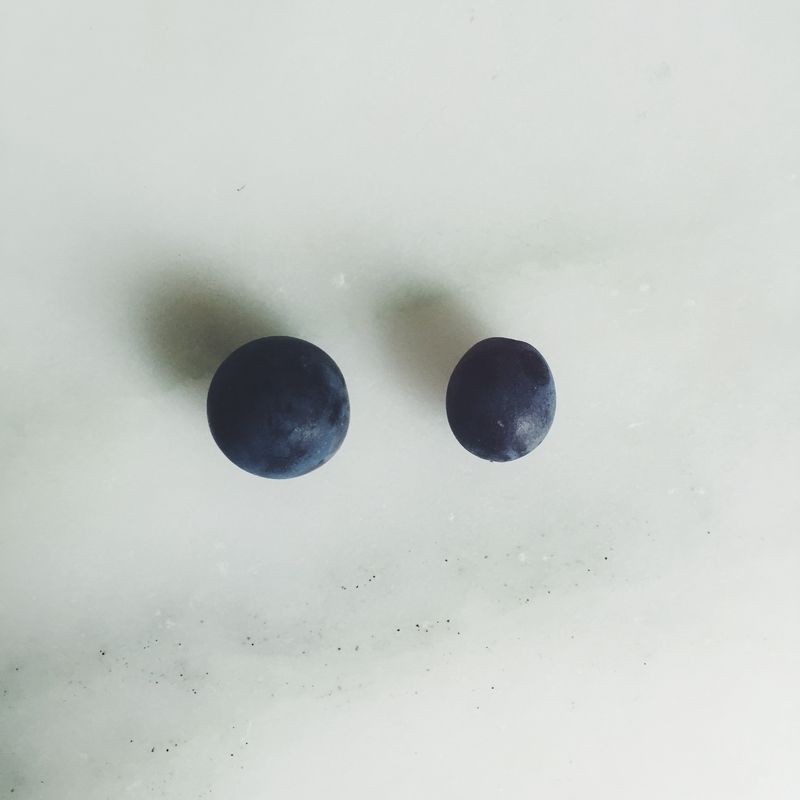Is this the seed-free miracle fruit we've been waiting for?

Thomcords (left) versus Concords (right)
Earlier this year, I accidentally bought Thomcord grapes at the grocery store, taking one glance at their blue-black color and assuming I had my hands on Concords.
I was alarmed to learn about the existence of this hybrid—from our photographer James Ransom, no less—but I was cleary behind the times: Thomcords have existed since 1983, when grape breeders working for the Agricultural Research Service in California crossed a Concord (thick-skinned, seedy, and related to wild species growing in New England) with a Thompson seedless grape (a white, seedless, crisp grape grown in California, used primarily for raisins, wine, and snacking).
Whereas Concords thrive in cooler climates (the Concords pictured here come from Paw Paw, Michigan), Thomcords can survive in the hot, dry growing conditions of California (ours came from Dinuba). Thomcords are smaller than Concords, with the same blue-black hue. And unlike Concords, Thomcords have less-bothersome seeds and their skin adheres to the flesh, which makes them easier both to eat and to cook and bake with.
With no pesky seeds or tough flesh, might Thomcords be the answer to our desire for Concords' labrusca flavor and our laziness?

Can you tell which are which? (Concords are left; Thomcords are right.)
So how does the flavor of Thomcords actually hold up? The Foundation Plant Services Grape Program Newsletter (yep, that exists) claims that Thomcords are "Concord-flavored" but modifies the statement: "The fruit has a pleasing Concord flavor although not as strong as Concord."
In our taste test, there was no confusing Thomcords and Concords. Concords have an almost cranberry-like sharpness, whereas the Thomcords had a purer sweetness, with less depth of flavor.

Concord (left) and his smaller relative, the Thomcord (right)
Later that week, our Test Kitchen Manager Derek spent forty minutes de-seeding Concords so that we could roast them for a cake topping. Compared to the batch of Thomcords I had roasted earlier that week, the Concords were significantly tarter and held their own better against the sweet, lemony cake.
We decided Concords were worth the hassle. (Reminder: Fresh garbanzo beans might not be.)
Are Concord grapes worth the tedious preparation? What about pomegranates? Speak your mind in the comments.




See what other Food52 readers are saying.